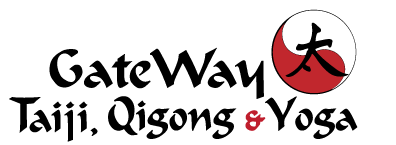YogaQi®
YogaQi - A Fun and Unique Blend of Yoga and Qigong (chee kung)
- A flowing, refreshing workout that’s easy on your joints
- A whole-body stretch, self-massage and core strengthening
- Energy flow to your internal organs, muscles and connective tissue
- Mindful attention to how your body feels and moves
Qi (pronounced “chee”) is the Chinese word for the body’s vital energy. Qigong (pronounced “chee kung”) is the practice of moving that energy through your body for health & wellbeing.
YogaQi® (pronounced "yoga chi") uses flowing Qigong exercises and Yoga postures to stretch, energize and relax your entire body, combining breathing, movement and mental focus to explore, enhance and circulate the body’s Qi.
Each class is different, playful and fun - and may include balance poses, stepping, twisting, stretching, knee bends and core, arm and leg strengthening, practiced with the intensity that's right for each student. You'll leave feeling energized and refreshed.
All classes will include:
- Centering: A short exercise designed to focus & prepare the mind
- Warm-up: Drawn from both yoga and qigong, the warm-ups prepare the joints & warm the muscles
- Yoga: Traditional postures & flows which target meridians in the arms, legs & torso
- Qigong: Exercises taken from the Medical & Martial schools of Qigong integrate body motion
and activate & circulate the body’s Qi
What Students Say
“I’ve practiced yoga for over 25 years, and enjoyed many different styles - Kripalu, Ashtanga, Iyengar, Vinyasa and Classical Hatha yoga - and I think I’ve found the perfect class in Yogaqi® This unique class is a wonderful, easy to follow blend of familiar yoga postures and qigong exercises that move energy through the body’s acupuncture channels. Bill Buckley, who created and trademarked Yogaqi®, believes that yoga and qigong must share historical roots, and I can see why. We flow naturally from yoga to qigong to yoga again - stretching, breathing, balancing and laughing! Each class is different and fun, and we end in savasana with a guided meditation from the Taoist tradition.” - B.G.
Historical Roots: 500-700AD
Yoga philosophy references and texts date back prior to 1700 BCE, but Hatha yoga postures, beyond those used for seated meditation, have only received focus since the 14th Century. Since that time, yoga postures have been systematically developed and refined to support and promote physical health and prepare the body for meditation. There are many styles of yoga taught today, most of them stemming from traditional Hatha Yoga.
Qigong dates back to approximately 1000 BCE, and began as a practice of coordinated movement and breathing designed to promote health and energy flow in the body. Depictions of Qigong movements have been found in tombs and dated to 163BCE and before.
Around 500-700 AD, both of these arts intermingled when Bodhidharma, the famous Indian monk, came to China, settled at the Shaolin Temple, and created the two classics, “Muscle Tendon Changing” and “Brain Marrow washing.” These texts, and Bodhidharma’s teachings, expanded traditional medical Qigong and mingled it with movement & Zen, clearly integrating Buddhist and Indian elements into this traditional Chinese philosophy. Similarly, Nalanda University in Bihar, India and other institutions formed around this time, allowed Chinese influence (like those of the famous Chinese pilgrim Xuanzang) to establish themselves in the Hindu and Buddhist traditions.
By creating YogaQi®, GateWay founder Bill Buckley reconnected these two arts in their current stage of evolution - bringing the best of both into a contemporary class.


Sorry, the comment form is closed at this time.